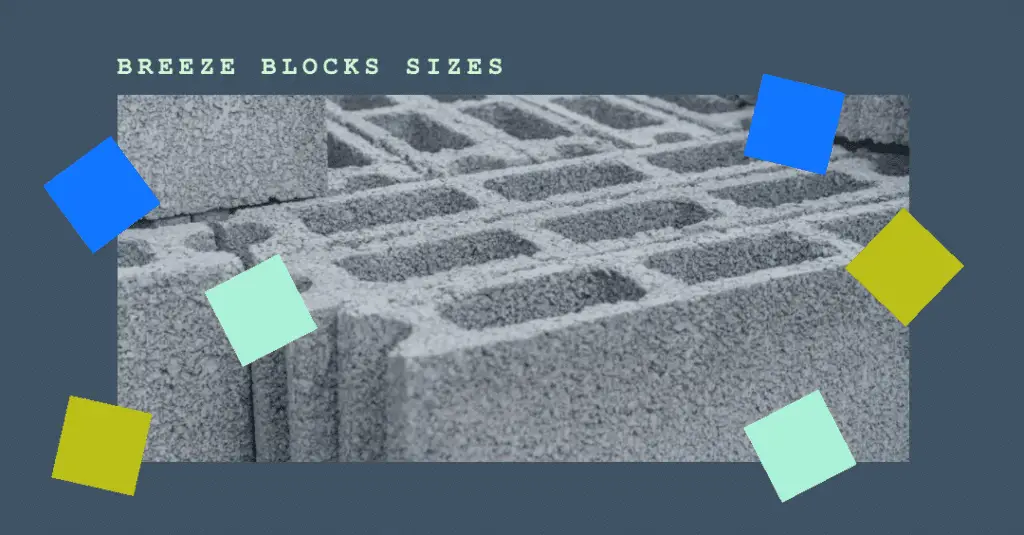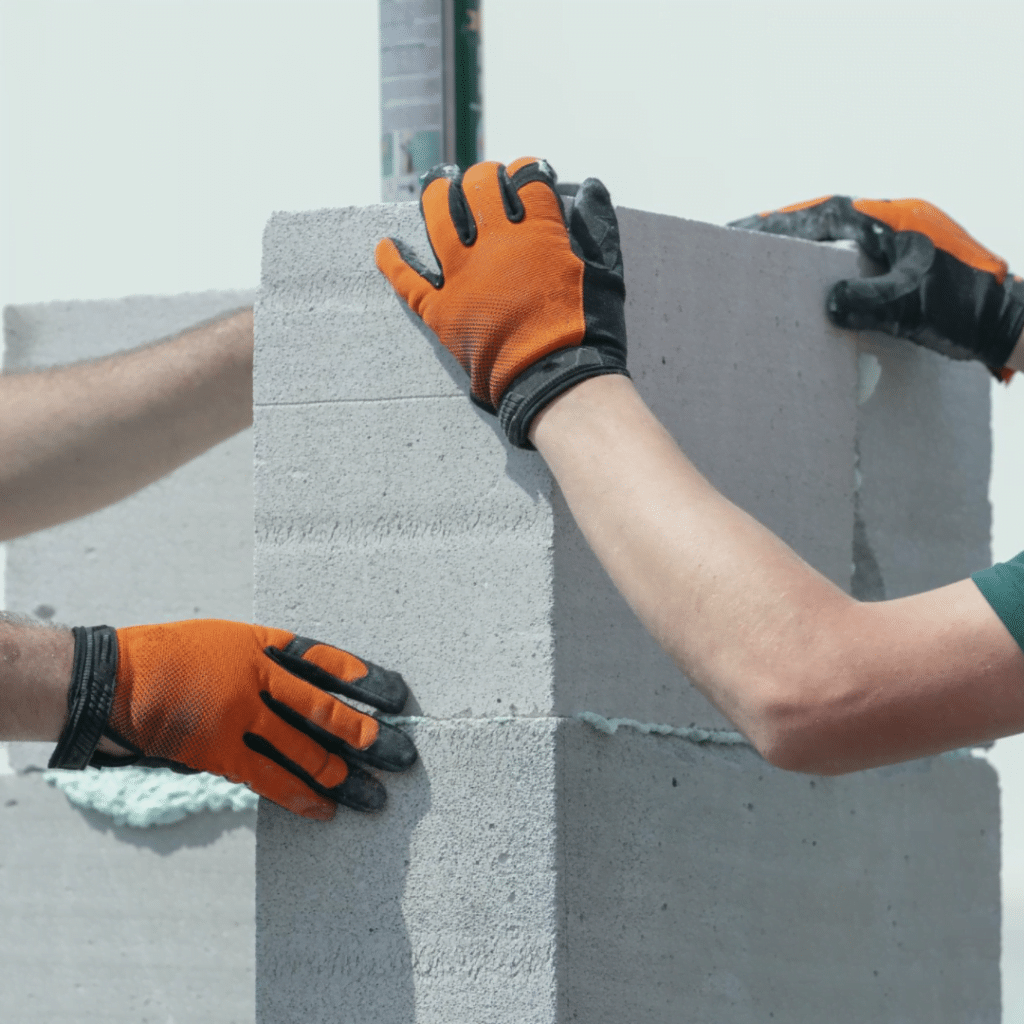Concrete breeze blocks have evolved from functional construction elements to design statements, offering a unique blend of aesthetics and practicality.
In this article, we delve into the sizes, costs, and various creative applications of concrete breeze blocks, including their use in breeze block walls and comparison with aerated concrete blocks.
Understanding Concrete Breeze Block Sizes
Concrete breeze blocks are available in a range of sizes, from standard 4-inch to 9-inch widths.
The diverse size options allow architects and builders to select the ideal dimensions for their projects, ensuring both structural integrity and visual appeal.
Breeze blocks, also known as aerated concrete blocks or thermalite blocks , are often larger than bricks.
Breeze Block Dimensions

The standard dimensions are usually 440mm x 215mm x 100mm (length x height x width).
Here’s a table showing the different sizes readily available in the UK
| Length (mm) | Height (mm) | Width (mm) |
|---|---|---|
| 440 | 215 | 75 |
| 440 | 215 | 100 |
| 440 | 215 | 140 |
| 440 | 215 | 150 |
| 440 | 215 | 190 |
| 440 | 215 | 200 |
| 440 | 215 | 215 |
These blocks are essential for many areas of construction
Evaluating Costs of Concrete Breeze Blocks
The cost of concrete breeze blocks can vary based on factors such as size, design complexity, and supplier.
While price points differ, it’s essential to consider the long-term value these blocks bring to your construction project.
Their durability, energy efficiency, and aesthetic appeal make them a worthwhile investment.
Creative Applications | Breeze Block Walls
A breeze-block wall not only serve as a functional barriers but can also showcase the intricate patterns of concrete breeze blocks, adding an artistic touch to the environment.
The breeze block size contributes to the overall visual aesthetics of a structure.
Planning on building with breeze blocks use our handy breeze block calculator to work our how many you need.
Larger blocks can create a sense of solidity and grandeur, while smaller blocks allow for more intricate and delicate designs.
Architects often play with various dimensions to achieve a harmonious balance between form and function.
Comparing with Aerated Concrete Blocks
Aerated concrete blocks, known for their lightweight composition, are often considered alongside concrete breeze blocks.
While aerated blocks are excellent for insulation, concrete breeze blocks provide structural strength and a distinct aesthetic.
Understanding the strengths of each block type helps architects make informed decisions based on project requirements.
DIY Projects and Beyond

Concrete breeze blocks are not limited to construction; they inspire various DIY projects.
Craft garden planters, outdoor seating, and decorative screens using these blocks to add a unique touch to your space.
The combination of creativity and functionality makes these projects stand out.
FAQ’s
How much are breeze blocks?
Breeze block prices can vary due to factors like size, design, supplier, and location. For example, Toplite Aerated concrete Blocks (L)440mm (W)100mm (H)215mm are priced at £2.19 each or £197 per pallet of 90 at B&Q.
Keep in mind that prices can change based on market conditions and block type.
How many breeze blocks do I need?
To determine the required quantity of breeze blocks you need, measure the height and length of the walls in meters, multiply the height by the length, and then multiply the result by 10.
For instance, if you have a wall that’s 1 meter high and 5 meters long, you’d calculate it like this: 1 x 5 = 5 x 10 = 50 blocks needed to get the job done.
Why use breeze blocks instead of bricks?
Breeze blocks offer a touch of uniqueness with their intricate designs and better ventilation, setting them apart from traditional bricks. They’re versatile and strong, making them a great choice. Plus, their larger size can help you save on costs and time during installation. They also excel at insulation, helping regulate indoor temperatures.
How big is a breeze block?
A standard breeze block typically measures 440mm (length) x 215mm (height) x 100mm (width). These dimensions can vary slightly depending on the manufacturer and specific design, but the mentioned size is the most common for standard breeze blocks.
Conclusion
Concrete breeze blocks, with their diverse sizes, aesthetic appeal, and versatility, have redefined the possibilities in architecture and design.
The exploration of sizes and costs, along with their applications in walls and comparisons with aerated concrete blocks, opens up a world of potential for architects, designers, and DIY enthusiasts.
Whether you’re aiming for structural strength, energy efficiency, or an artistic flair, they offer a compelling solution that resonates with both form and function.
Author Profile

- I have many qualifications and certificates in construction, such as City & Guilds, CPCS and CITB. These are the highest standards of training and competence in the industry. Whether you need help with plumbing, carpentry, bricklaying or any other trade, I’m here to help you succeed.
Latest entries
- March 6, 2024CalculatorsWall Tile Calculator: How Many Wall Tiles Do You Need
- February 29, 2024Roof Truss Cost Calculator
- December 31, 2023Wage Take Home Calculator
- December 30, 2023Day Rate Calculator

